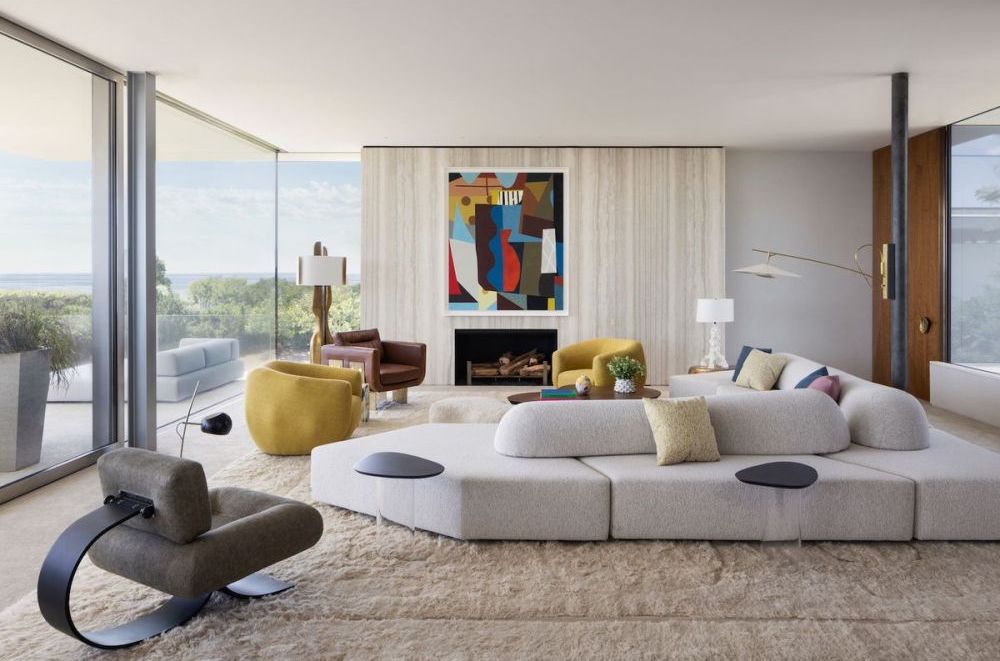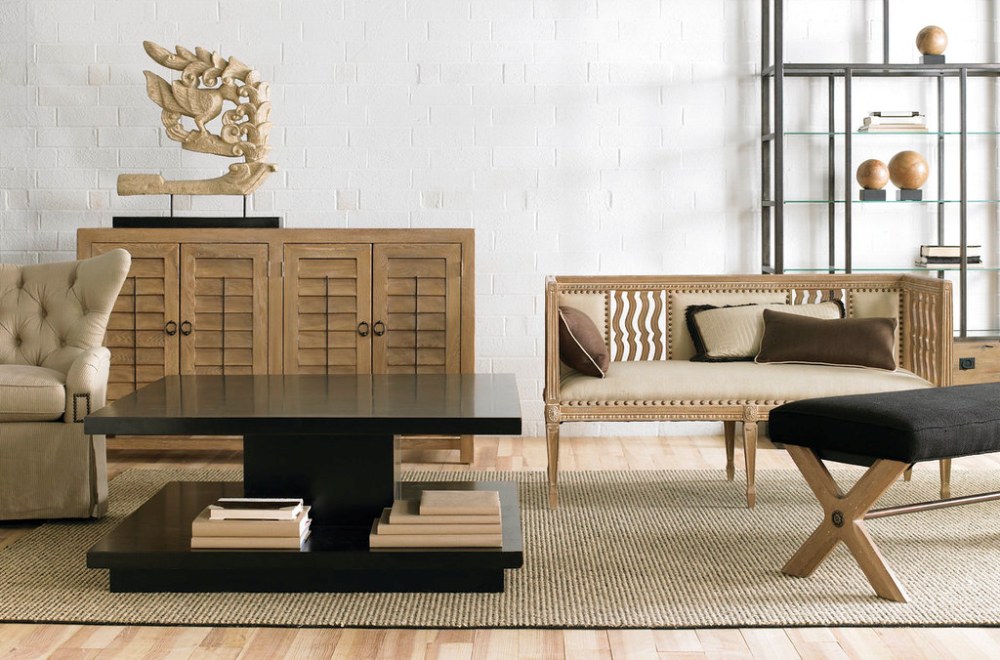
In today’s rapidly evolving world, interior design trends are constantly shifting and adapting to meet the needs and desires of homeowners, designers, and architects alike. As we look ahead to the future of interior design, it’s exciting to explore the emerging trends that are shaping tomorrow’s spaces. From sustainable design solutions to tech-integrated living spaces, the possibilities are endless.
Sustainable Design Solutions
Sustainability is no longer just a trend; it’s a fundamental shift in how we approach design. As awareness of environmental issues grows, more homeowners and designers are seeking eco-friendly materials and practices. From energy-efficient appliances to recycled materials and passive design principles, sustainable design solutions are becoming increasingly prevalent in interior spaces. By incorporating elements such as reclaimed wood furniture, low-VOC paints, and energy-efficient lighting, homeowners can create spaces that not only look beautiful but also minimize their environmental impact.
Biophilic Design Elements
Biophilic design, which seeks to incorporate elements of nature into interior spaces, is gaining traction as a way to improve well-being and connection to the natural world. Incorporating biophilic design elements such as indoor plants, natural materials, and views of nature can have a profound impact on mental and physical health. Studies have shown that exposure to nature in the built environment can reduce stress, improve cognitive function, and increase productivity. By bringing the outdoors in, homeowners can create spaces that feel tranquil, rejuvenating, and inspiring.
Tech-Integrated Living Spaces
Technology is transforming the way we live, work, and interact with our surroundings, and interior design is no exception. From smart appliances and home automation systems to integrated entertainment systems and wireless charging stations, technology is becoming increasingly integrated into interior spaces. Smart home technology allows homeowners to control their lighting, heating, and security systems with the touch of a button, while integrated entertainment systems provide immersive audiovisual experiences. By incorporating technology into their designs, homeowners can create spaces that are not only stylish and functional but also efficient and convenient.
Multifunctional Furniture Solutions
With urban living spaces becoming increasingly compact, multifunctional furniture is becoming a necessity rather than a luxury. From modular sofas and convertible coffee tables to wall-mounted desks and storage beds, designers are finding creative ways to maximize space without sacrificing style or comfort. Multifunctional furniture solutions allow homeowners to make the most of their limited square footage by providing flexible and adaptable living spaces. Whether it’s a sofa that transforms into a bed or a dining table that doubles as a workspace, multifunctional furniture allows homeowners to optimize their space and make room for the things that matter most.
Statement Lighting Fixtures
Lighting is a crucial element of interior design, playing a key role in creating ambiance, highlighting architectural features, and enhancing the overall aesthetic of a space. Statement lighting fixtures, such as oversized pendant lights, sculptural chandeliers, and geometric sconces, are emerging as a popular trend in interior design. These eye-catching fixtures serve as focal points in a room, adding drama, personality, and visual interest. Whether it’s a cascading pendant light in the dining room or a cluster of Edison bulbs in the kitchen, statement lighting fixtures can transform an ordinary space into something truly extraordinary.
Bold Color Palettes
While neutral tones have long been a staple in interior design, bold colors are making a comeback in a big way. From rich jewel tones and vibrant primary hues to earthy terracottas and soothing pastels, bold colors are being used to inject personality and warmth into interior spaces. Whether it’s a feature wall painted in a daring shade of emerald green or a statement sofa upholstered in deep navy velvet, bold colors can add depth, character, and visual interest to any room. By embracing color, homeowners can create spaces that feel vibrant, dynamic, and full of life.
Maximalist Decor
In contrast to the minimalist trend that has dominated interior design in recent years, maximalism is making a comeback. Characterized by bold patterns, eclectic furniture, and an abundance of accessories, maximalist decor celebrates individuality, creativity, and self-expression. From mixing and matching different styles and textures to layering patterns and colors, maximalism encourages fearless experimentation and embraces the idea that more is more. By incorporating maximalist elements into their designs, homeowners can create spaces that feel rich, layered, and utterly unique.
Conclusion
As we look to the future of interior design, it’s clear that innovation and creativity will continue to drive the industry forward. From sustainable design solutions and biophilic elements to tech-integrated living spaces and bold color palettes, the new interior design trends offer endless possibilities for creating spaces that are both aesthetically pleasing and functional. By staying informed and embracing these new interior design trends, homeowners and designers alike can create interiors that are truly ahead of their time.

FAQs
How can I incorporate sustainable design into my home?
To incorporate sustainable design into your home, consider using eco-friendly materials such as reclaimed wood, bamboo, and recycled glass. Opt for energy-efficient appliances and lighting fixtures, and incorporate passive design principles to maximize natural light and ventilation. Additionally, look for products with certifications such as ENERGY STAR and LEED to ensure they meet environmental standards.
What are some examples of biophilic design elements?
Biophilic design elements include indoor plants, natural materials such as wood and stone, water features, and views of nature. These elements help to create environments that promote well-being and connect occupants with the natural world. Consider incorporating biophilic elements into your home by adding plants to your living spaces, incorporating natural materials into your decor, and maximizing natural light and views.
How can I integrate technology into my home design?
You can integrate technology into your home design in various ways, such as investing in smart home devices and automation systems. Smart thermostats, lighting systems, and security cameras can enhance convenience, comfort, and security in your home. Consider incorporating built-in charging stations and wireless speakers for added functionality and entertainment. Designing spaces with integrated technology can create a seamless and connected living experience.
What are some ways to maximize space in a small living area?
To maximize space in a small living area, consider using multifunctional furniture pieces that serve multiple purposes. Choose furniture with built-in storage, such as ottomans with hidden compartments or beds with drawers underneath. Utilize vertical space by installing shelving or wall-mounted storage units. Use mirrors to create the illusion of space and enhance natural light. Finally, declutter regularly to keep the space feeling open and airy.
How can I incorporate bold colors into my home decor without overwhelming the space?
Start by incorporating bold colors as accents through accessories such as throw pillows, rugs, and artwork. Gradually introduce larger elements such as furniture or wall paint once you’re comfortable with the color palette. Balance bold colors with neutral tones to create visual interest without overpowering the space. Consider using bold colors in smaller doses or in areas where they can make a statement without dominating the entire room. Experiment with different color combinations and patterns to find the right balance for your space.
